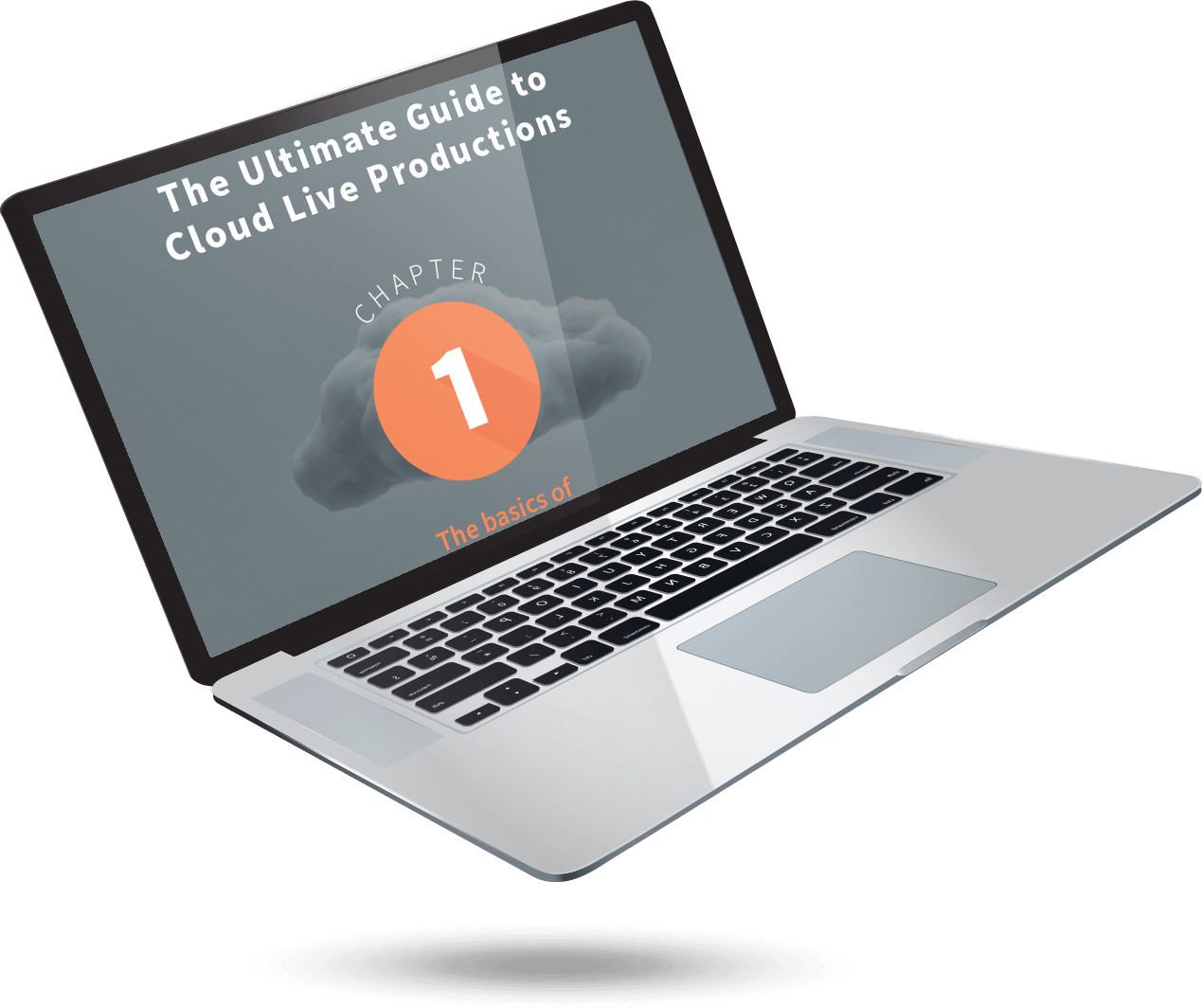Whether watching live sporting events, tuning in to breaking news, or participating in virtual conferences, audiences are drawn to the immediacy and authenticity of live content. Live streaming has even been brought into the mainstream by the everyday consumer, and it only takes one look at YouTube to see exactly to what extent.
Yet with the demand for such content experiences growing by the day, the technologies behind live productions are continuously needing to evolve to support larger, more interactive and engaging broadcasts that appeal to the appetite of viewers. This is where cloud comes into play.
A move to cloud
Whether watching live sporting events, tuning in to breaking news, or participating in virtual conferences, audiences are drawn to the immediacy and authenticity of live content. Live streaming has even been brought into the mainstream by the everyday consumer, and it only takes one look at YouTube to see exactly to what extent.
Yet with the demand for such content experiences growing by the day, the technologies behind live productions are continuously needing to evolve to support larger, more interactive and engaging broadcasts that appeal to the appetite of viewers. This is where cloud comes into play.

A move to cloud
We now live in a world where cloud technologies can bring unmatched agility to the broadcast playing field. In a recent PwC survey, 78% of business leaders said they have adopted cloud in most or all areas of their organizations. In broadcasting, cloud enables unlimited scalability, the flexibility to respond faster to market dynamics, and the reliability necessary to keep operations running all the time.
The shift to cloud-based live production in the broadcasting world marks a revolutionary step, and harnessing its full power can mean all the difference between success and mediocrity. For a positive result, broadcasters must adopt a strategic and structured approach, integrating comprehensive frameworks and thorough planning. There are four critical ways to achieve this.
1
Build a Landing Zone for a robust and consistent future

In military terminology, a Landing Zone is a designated area where an aircraft can safely land. In the live broadcasting world, a Landing Zone is an essential component that helps create a reliable and secure cloud environment. It offers a well-structured blueprint that includes network design, identity management, logging, monitoring, and automation.
A Landing Zone also ensures there is a robust foundation for security and allows for policy customization across accounts. It sets clear boundaries and guidelines, ensuring all cloud deployments are consistent, manageable, and aligned with the organization’s compliance and governance standards. Promoting standardization is essential for live broadcasting, where a consistent architecture helps ensure a uniform and reliable streaming experience across various channels. Landing Zones are critical as they make workload management much more straightforward. This systematic approach minimizes disruptions and ensures that cloud infrastructure is optimized for high-performance broadcasting, capable of handling large volumes of data and high-traffic events.
2
A Cloud Adoption Framework for a holistic cloud culture

Moving to the cloud isn’t just about adopting new technologies; there must also be a fundamental shift in operational and cultural dynamics. According to Flexera, 66% of enterprises believe that cultural change is necessary to realize the benefits of the cloud entirely.
Putting a cloud adoption framework in place serves as a holistic guide for this journey, while ensuring the transition aligns with business strategic goals. It offers a roadmap for managing and optimizing cloud resources effectively to make sure that the cloud environment supports the broadcaster’s workflows, content management, and distribution strategies.
In live broadcasting, this ensures that the cloud strategy supports the broader objectives of delivering quality content, reaching a wider audience, and optimizing operational efficiency.
At the same time, the framework addresses critical considerations such as governance structures, security posture, and compliance requirements. In the same Flexera report, 35% of respondents listed compliance as a top concern in cloud adoption, demonstrating a need for cloud solutions that mitigate any dangers. By providing a structured approach to cloud adoption, the framework ensures that the transition to cloud-based live streaming is smooth, risks are managed, and the full benefits of cloud technologies are realized.
3
Project management: orchestrating success

Effective project management is crucial for any successful cloud migration project. It involves meticulous planning, resource management, and stakeholder coordination.
When it comes to broadcast cloud live production, project managers play a crucial role in ensuring that the migration’s technical, financial, and operational aspects are aligned with the project’s goals and timelines. They act as the bridge between technology and business, ensuring that the migration delivers tangible benefits.
Live streaming projects and events also have time-sensitive deadlines. Effective project management enables timely delivery by breaking down the project into manageable sprints and providing a framework for development.
4
Cloud planning: setting the foundation for success

Cloud planning is crucial and involves identifying the specific requirements of live broadcast production, such as real-time video processing, streaming formats, data storage needs, and scalability demands.
A well-designed plan ensures the infrastructure can create cost-effective, reliable and optimized performances. It also recognizes that there are no retakes in the live production environment, so it provides a contingency plan to handle any unexpected challenges during live broadcasts, such as technical glitches or unforeseen disruptions.
Cloud planning is all about understanding and provisioning for the high-performance computing resources crucial for real-time video processing, storage solutions to house vast amounts of media content, and managing fluctuating demand. As audience sizes vary widely, scaling resources up or down in real-time is essential to handle sudden spikes in viewership without compromising performance.
Cloud planning also allows live streaming services to be deployed across multiple geographic regions. Content delivery can be optimized for viewers worldwide, reducing latency and providing a consistent and high-quality viewing experience regardless of the viewer’s location. But cloud planning is about more than just meeting the current needs. It is also about having a visionary outlook, anticipating future trends in the industry, and evolving audience expectations.
Don’t just think tech, think strategy
The transition to cloud-based live production in broadcasting is no longer just about adopting new technologies. There needs to be a strategic transformation. For broadcasters to experience a smooth, efficient, and successful migration to the cloud, they must adopt the four critical frameworks and strategies mentioned above. This not only optimizes operational efficiency but will transform broadcasting for the better. The future of live streaming looks way brighter with the cloud.
Need some help along the way?
Vizrt has helped many broadcasters and content creators adopt cloud for various aspects of their operations, from live productions through to media asset management and channel branding. Speak to us today to discuss how we can help you realize your cloud plans.

Ultimate Guide
Cloud Live Productions
Get a comprehensive understanding of cloud live productions with Vizrt’s Ultimate Guide. All you need to know about innovative technology for successful live productions. Download now and enhance your live production.





